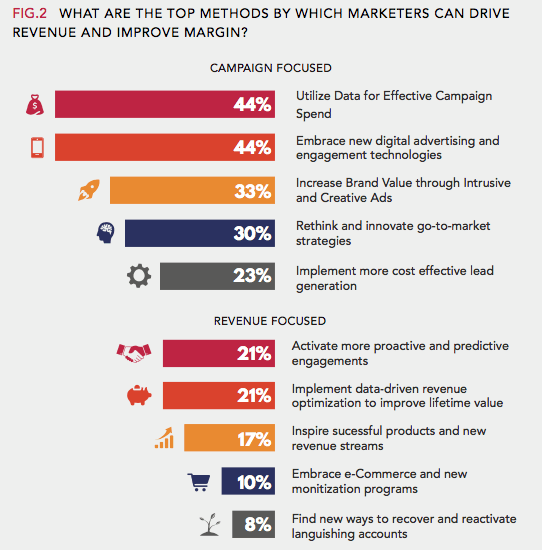A decade ago marketing leaders could be Don Draper. Today, the three-martini lunch and afternoon golf is off the table, and replacing it is an expectation that marketing will lead top-line revenue growth.
Goodbye brand ambassador, hello performance marketer.
 “Being a chief marketing officer is not even remotely the same role as it was ten years ago,” says Liz Miller, SVP of marketing for the CMO Council, which just released a report on the state of marketing and the CMO. “Before, you were the chief branding ambassador — it was really more about advertising and the introduction of marketing as a formalized process.”
“Being a chief marketing officer is not even remotely the same role as it was ten years ago,” says Liz Miller, SVP of marketing for the CMO Council, which just released a report on the state of marketing and the CMO. “Before, you were the chief branding ambassador — it was really more about advertising and the introduction of marketing as a formalized process.”
With the global recession and the rise of digital, however, all of that changed.
Budgets were slashed, Miller said, and CMOs were forced to get smart fast in all things digital, accelerating the transformation of the role away from simply pure creativity and towards a healthy helping of data, science, and technology.
The result today is that today, 35 percent of CEOs have high expectations that CMOs contribute to top-line growth, and 33 percent make the once-extraordinary statement that revenue generation is the primary mandate of marketing. Another 23 percent have moderate expectations along the same lines.
That’s a significant shift. But it doesn’t mean that CMOs are now data drones.
“We have come out of the creative shadows,” says Miller. “But we didn’t leave those talents behind … we brought them with us and evolved them, and our storytelling is now being applied in very different ways, such as translating the voice of the customer so we can shape the brand to resemble the values of our most profitable customers.”
Some of those methods include using data, embracing new technologies, and innovating new go-to-market strategies, the report says.

The result is a fundamental shift in the CMO job description. Miller describes it like this: “The CMO is the executive charged with translating brand into business.”
There’s still some room to grow, of course.
The report, coauthored by the CMO Council and Deloitte, says that only 8 percent of CMOs are currently auditing, assessing, and continually improving the customer experience; only 7 percent were looking for strategic partnerships or alliances; and only 16 percent were teaming with leadership executives on global business and strategy.
And everything is more challenging today with the growth of mobile.
“Our customer today gets information from so many sources, and could get company communications via email, TV, push notifications, a friend’s post … they’re getting signals and influences from so many different places,” says Miller. “This is the omnichannel experience, and we no longer believe in this idea of a linear funnel … the beauty and the horror of omnichannel is that it is bidirectional, and the customer always has the advantage.”
The full report is available from the CMO Council’s website.
VentureBeat's mission is to be a digital town square for technical decision-makers to gain knowledge about transformative enterprise technology and transact. Learn More

